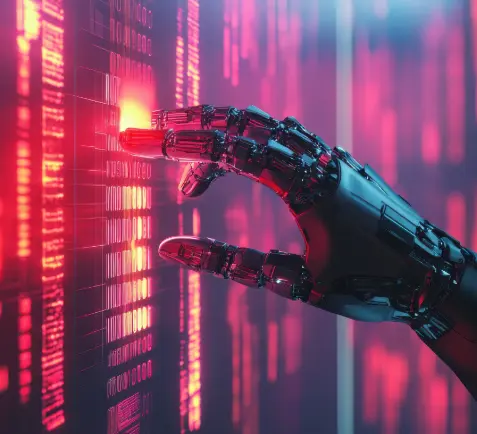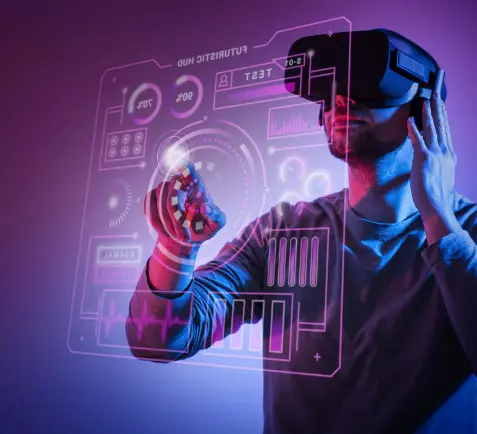The healthcare industry took the brunt of the Covid-19 pandemic from the very beginning. It was, and still is, a humongous task for hospitals to deal with the rising number of COVID patients as well as handling the regular consults.
To delve deeper into the state of healthcare in the COVID times, we interviewed Parag Sharma, CEO, Mantra Labs Pvt Ltd. Parag shares his insights on how technology can help in delivering digital-first health experiences for patient care in the New Normal.
Parag is a product enthusiast and tinkerer at heart and has been at the forefront of developing innovative products especially in the field of AI. He also holds over ten years of experience working in the services line and has been instrumental in launching several startups in the Internet & Mobile space. His rich domain expertise and innovative leadership have helped Mantra climb to the top 100 innovative InsurTechs in the World – selected by FinTech Global.
Catch the interview:
Connect with Parag- LinkedIn
COVID-19 and Its impact on Healthcare Organizations
Considering the COVID situation, according to you how has COVID-19 impacted the IT & service operations among healthcare organizations?
Parag: Since the onset of COVID-19, the healthcare sector has been deeply impacted. Institutions are facing a serious crunch in manpower. IT support systems which were usually manned and managed by a large team of IT professionals are not available in the same strength. ‘Resource allocation’ is one of the biggest concerns due to physical and mental exhaustion of the healthcare workforce.
Hospitals are facing issues such as operational disruption due to staff quarantine, supply-chain delays and sudden decline in patient footfalls, difficulty in sustaining fixed costs, etc. People are not comfortable getting out of the safety confinements of their homes due to the rising risk of getting infected with the virus. Hospitals will have to reassess their future strategy and budgets in light of the uncertain economic situation.
Preparing for the Future
What can hospitals do to ensure the continuity of their customer-facing operations in the wake of a second Pandemic wave?
Parag: There are many things that hospitals can do to manage themselves in this hour of crisis. Being more digital than what they are would be one step forward for all of them. They can bring their IT systems to the cloud so that the person can access data and manage their work remotely. They can enable their patients to book appointments and enquire about services through apps and chatbots which won’t require them to call the reception or come to the hospital. These are some of the services which hospitals can provide to their customers with minimum physical contact.
Related: Manipal Hospital’s move to a self-service healthcare mobile application
Hospitals can extend Telehealth services to their patients. Recently, telehealth has proved to be useful especially when there is asymmetry between the number of patients and healthcare providers. I think it will be very useful for healthcare institutions to deploy telehealth solutions to provide medical facilities to people who have so far been outside the benefits of healthcare.
New Expectations in Health Experiences
Is consumer behavior defined by the ‘new normal’ going to change the way we access healthcare from this point on?
Parag: Yes, people will expect a completely different way to access healthcare services from now on. Hospitals should gear-up and rise to this occasion. The pandemic has also provided a new opportunity to adopt a completely different approach in the way healthcare is delivered. They always felt that medical care cannot be provided remotely but now this is happening and people are appreciating remote healthcare services. Hospitals and healthcare institutions are convinced that telehealth and remote care will be more successful soon.
Technology in Healthcare can Bridge Operational Gaps
What are the operational challenges, as far as digital capabilities go, that hospitals are facing currently? And, what steps must they take to bridge these gaps?
Parag: Operational challenges are not just digital challenges. But a lot of these challenges can be addressed with technology. For example, Electronic Health Records which hospitals manage within the premises can be moved to the cloud so that the person can access these records on the cloud itself and need not come to the hospital.
Related: Medical Image Management: DICOM Images Sharing Process
Secondly, if you deploy telehealth and telemedicine solutions, irrespective of where your patients are or doctors are, hospitals can deliver the required care to its patients. You can even extend your diagnostics services to your patients by giving them an application through which they can seamlessly book appointments for consults, diagnostics, or pathological services and resolve their queries, etc. Simply by giving a seamless interface either through bots or applications can go a long way in providing better health experiences to the customers.
Role of Chatbots in Superior Customer Experiences
According to you, what role does chatbots powered by Artificial Intelligence have in the Healthcare CX landscape?
Parag: Chatbots are the simplest example of the implementation of AI-based technology in healthcare. There are a lot of things which bots can do simplistically. For example, if a patient wants to book an appointment with the doctors, instead of going through a complex web applications and interfaces, what if I can simply write “I want to book an appointment with the doctor Dr. XYZ at 4 pm” and the bot can figure out in case the time slot is available with that particular doctor, it will confirm the appointment followed by a payment process if the payment has to be made upfront.
Apart from this, you can extend your bots to provide e-consultations where doctors can do remote consultations via audio and video features of a chatbot. So there is a huge scope for bots beyond answering routine queries by customers or booking appointments. It does not stop just there. You can extend chatbot functionalities to support functions such as admin, HR, finance, and business process efficiency so that they can provide better services to their customers.
Related: Healthcare Chatbots: Innovative, Efficient, and Low-cost Care
Chatbot Use Cases in Healthcare
Could you tell us some possible bot use cases for delivering better customer experiences to digital health users?
Parag: Apart from booking appointments and resolving customer queries, these bots can conduct remote consultations, internal processes, health symptom checker, out-patient video consultation, second opinion consultation, ordering medicines, psychological counseling & mental wellness, scenario-based risk advice, Heroism Recognition for employees, etc. Also, it can be further extended to help patients enquire about health insurance related queries, and all the interactions between insurance companies and hospitals can be provided to the patient.
Related: Healthcare & Hospitals Use Cases | Digital Health
The Road Ahead
COVID-19 has forced hospitals to revise patient support strategy with limited operational staff that is bringing every day a new challenge. A way out is to heavily rely on digital innovation.
In India we have a disparity between the no. of healthcare providers and care seekers. Without technology, I don’t think there is any way healthcare institutions will be able to scale to a level where they can provide meaningful services to such a large number of people. Hospitals can invest in setting up an information exchange; making the process as seamless as possible; and removing all possible inefficiencies from the supply chain through technology.
Future growth for hospitals will come from digital technology because patients will opt more for digital platforms. And it is up to hospitals to catch up with the pace at which modern technology is developing. We, at Mantra Labs, have achieved several use cases including hospitals/diagnostic centers that are able to deliver superior health experiences.
Check out the webinar on ‘Digital Health Beyond COVID-19: Bringing the Hospital to the Customer’ on our YouTube channel
Knowledge thats worth delivered in your inbox





